Divisions of CMSI Molecular Science Division Institute for Molecular Science,National Institute of Natural Sciences
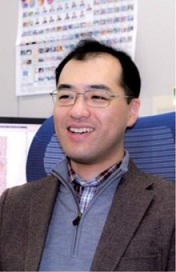 |
Hisashi OkumuraAssociate Professor, Research Center for Computational Science, The Molecular Science Division pursues research into large-scale computing in the field of molecular science, under the direction of Director Kazuo Takatsuka. It also collaborates with experimental researchers and industry to conduct personnel training and other activities to advance the field. Hisashi Okumura introduces the CMSI Molecular Science Division, located in the Institute for Molecular Science, and the Research Center for Computational Science, which conducts supercomputer use and maintenance. |
|---|
Emphasizing the training of young researchers and researcher interchange
The Theoretical and Computational Chemistry Initiative (TCCI) is located within the Institute for Molecular Science at the National Institute of Natural Sciences. The Institute for Molecular Science is a world-famous research institute that conducts research in chemistry and the fields of physics and materials science that are closely related to chemistry. The FY2014 University Ranking published in April 2013 by the Asahi Shimbun Newspaper includes rankings for the frequency with which academic papers from various institutions were cited by the Thomson Reuters Corporation in 2007 - 2011. The Institute for Molecular Science was ranked number one in Japan in the fields of chemistry and materials science and number two in Japan overall. 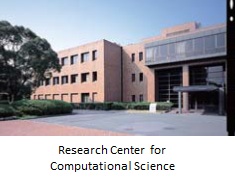
The Institute for Molecular Science Computer Center, the predecessor of the Research Center for Computational Science at the National Institute of Natural Sciences, was established in May 1977 as a research facility for the Institute for Molecular Science. In January 1979, it began a shared use service using a Hitachi M-180. Currently the Center has a system with a total of 326.2 TFlops, made up of the Fujitsu PRIMERGY, Fujitsu PRIMEHPC FX10 and SGI UV2000. In the past 35 years, the Center has achieved a seven-digit improvement in computing performance. These computing resources are made available to researchers throughout the country on a shared use basis. The number of users has been increasing during the past five years; in FY 2012, there were 213 groups and 807 individual users. 20% of the computing resources are provided within the CMSI use framework to researchers who are involved in CMSI. In addition to the computing hardware, molecular simulations and quantum chemistry calculation software are also provided for shared use, and these are made available to CMSI researchers as well. The Center's fast, large-scale computing environment is used for research in the fields of molecular science, physics and bioscience, and a diverse array of research projects are underway based on molecular theory, condensed matter theory and biomedical simulations. 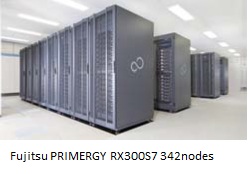
The Research Center for Computational Science does not simply provide a computing environment. It also invests a great deal of energy in the training of young researchers and fostering the exchange of information and interchange among researchers. Every winter,together with TCCI, the Center jointly sponsors the Molecular Simulation School and Quantum Chemistry Winter School, featuring lectures by professors who are engaged in advanced research activities in the fields of molecular simulation and quantum chemistry. These Schools have earned a reputation as excellent venues for the training of graduate students and young researchers. Every January,the Center also holds a Research Center for Computational Science Workshop, in which active researchers from the fields of molecular science and a wide range of related fields such as condensed matter physics and material science are invited as lecturers, to discuss issues that need to be resolved in the areas of both theory and computational science and the methodologies that will be needed.
“Ensuring easy operation for users even if the system changes”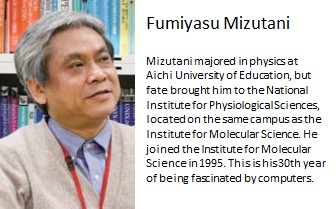
The Research Center for Computational Science has a total staff of 16: Director Shinji Saito, Professorr Masahiro Ehara, one associate professor (myself), five assistant professors, six technical staff members, and two office assistants. The technical staff members support the diverse activities of TCCI and the Research Center for Computational Science. Fumiyasu Mizutani, who has supported the operations of the Research Center for Computational Science for many years, provided an introduction to the Center and spoke about the challenges and rewards of the work, both of which he is made keenly aware of on a daily basis.
“The main supercomputer at the Research Center for Computational Science has changed from one made by Hitachi to one made by NEC, and further to one made by Fujitsu. Moreover, the Center was quick to realize the importance of parallel computing, and it introduced subsystems made by IBM and SGI. For that reason, some people joke that it's like a computer museum, but that's because it's always had a climate in which it wasn't mired in the past but always made an active effort to introduce whatever technology was best at the time. But the tradeoff was that the Center couldn't make users suffer inconvenience as a result, and that made things rough for the operation side. For example, the molecular orbital method application named Gaussian that is used frequently is provided with a tool that allows you to enter a job simply by specifying the input file, and it's designed so users won't have to be concerned about differences between systems. As you can see, part of our day-to-day work activities is searching for areas for technical development, and I find that kind of thing very rewarding. 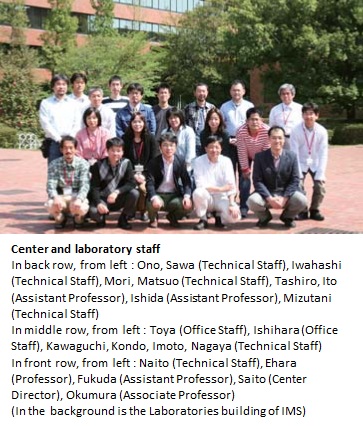
In order to make things convenient for CMSI users, as part of the FY 2012 supercomputer upgrade we introduced the first machine of commercial version of the K computer, Fujitsu PRIMEHPC FX10, as a development server. Not only in ordinary use but for system upgrades as well, we reflect the opinions of the molecular science community. So I hope people will continue to actively share their views with us.”
The capabilities of the technical staff are crucial for accomplishing the various tasks at the Research Center for Computational Science. As team leader, Mizutani in particular not only serves as the facilitator for the technical staff, he also has a thorough knowledge of all work activities, and he is essential to the operations of the Center. He hopes that the teaching staff and the technical staff will continue to maintain close collaboration as they provide a large-scale high-speed computing environment, while at the same time playing a role in the development of computational molecular science through the training of personnel in the fields of theory and computational science and promoting research interchange.
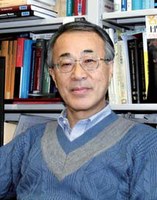 |
Message from the Director of theMolecular Science Divisions
Kazuo TakatsukaRecently I have become concerned about the “dream” of research. A dream is something that you hope for, something that you pursue step by step in order to achieve. From that process, new dreams and challenges are born. A “never-ending” dream is not one that is distant. It’s more that, as you move one step closer to it, a new dream appears. It’s similar to the hierarchical structure of natural phenomena. Recently I realized that a great many of the questions that I was burning to solve in my younger days have been answered. But at the edge of the horizon, there was always the next mountain that I wanted to climb. The K computer, too, was once a calculation environment that existed only in our dreams. Now that it has been achieved, it would be a pity if the dreams of young researchers and students rapidly faded away and became something that was strangely realistic. Once you are able to perform calculations and visualize things, is that really the end? Are your goals achieved once the numbers have emerged? Surely that cannot really be true. Surely there must be even bigger dreams. |
|---|

